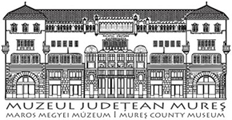Marisia - Maros Megyei Múzeum Évkönyve 30/1. (2010)
Articles
96 N. Man Hygia, Silenus,8 etc. In the eastern part of Dacia, certain iconographic representations on burntclay moulds were also known. Thus, the mould of a votive tablet represents Liber Pater9 and another- in the shape of a medallion - the bust of Serapis.10 11 From the category of objects with artistic value the patera handles11 and a ring with representation of Minerva12 can be also mentioned. If the statues of high artistic skill - the head of Juno, for instance - were imported products, the funerary monuments illustrate the activity of the local lapicides and of the itinerant artisans. From the religious point of view funerary monuments represent a special category, usually without any iconographic representations of deities. Only gods that have funeral meanings are mentioned occasionally: Gorgona Medusa, the protomes of the Winds and Attis, depicted as a fir cone.13 A special signification has an image representing the Lupa Capitolina,14 seen on two sepulchral monuments from Criste^ti and one from Bräncovene§ti. Such a representation - signum originis - has a clear social and cultural significance: the symbol of the Eternal City represented on the funerary monuments proves the pride of being a Roman citizen, of belonging to the Roman world.15 The image representing the Lupa Capitolina - the most significant products of Roman provincial art - shows that the Roman way of life and the Latin language imposed themselves in the rural environment of Dacia. From this point of view, the strong stimulus given to Romanization by the stable links, firstly economic but military and cultural as well, with the provinces of the Rhine and the Middle Danube and through these with Northern and Central Italy, must be noted. Finally, Attis,16 Gorgona Medusa, Thanatos and the protomes of the Winds17 - frequent appearances in the funeral symbols of the entire Roman world - complete the figurative repertory of the sepulchral monuments from this rural area. Imagery gives clues as to how the gods were envisaged and worshipped. The production of a religious representation may serve several different purposes. If a stone monument which portrays a deity is places in a temple, shrine or locus consecratus, it may possess a different function from one which comes from a domestic context or grave. Regarding the area of religious beliefs, the archaeological evidence is augmented by a vastly increased iconography. Thus, the sculptural monuments - cult-images or ex-votos - illustrate the picture of the religious life in this geographical area. On the other hand, images of the deities - Jupiter,18 Hercules19 and Amor20- also appear on ceramic products frequently used in daily life, as well as on the iconographic representations on moulds. One can more or less clearly distinguish two categories of deities: those related to official Roman cults and those which, although apparently Roman, have not a truly Roman origin. When epigraphic documentation is lacking, it is quite difficult to attribute an ex-voto to this 8 Pop 1967, 178, nr. 11, fig. 11. 9 Pop 1972, 178. 10 Popa 1965,231-232, fig. 1. 11 Rusu-Bolindet 1997, 325-388. 12 Popescu 1956, 143, fig. 116/10. 13 Teposu Marinescu 1982; Floca-Wolski 1973, 18-21, 35-36; Protase-Zrinyi 1994; Protase-Zrinyi 1992, 69-95. 14 Pop 1971, 173-185; Protase 1997. 15 Bärbulescu 1994, 159. 16 Teposu Marinescu 1982, 202, nr. 18; 206, nr. 36. 17 Teposu Marinescu 1982, 202, nr. 72, 73. 18 Isac 1974, 64, note 17. 19 Bärbulescu 1977, 186, nr. 64. 20 Floca 1953, 770-771, fig. 11.
